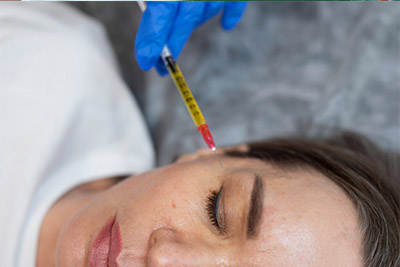PRP
What is PRP?
Platelet-rich plasma (PRP) is a substance that promotes healing when injected.

Plasma is a component of your blood that contains special proteins that help it clot. It also contains proteins that promote cell growth. Researchers produce PRP by separating and concentrating plasma from the blood.
The idea is that injecting PRP into damaged tissues encourages your body to produce new, healthy cells and heal. Because tissue growth factors are more concentrated in prepared growth injections, researchers think the body's tissues can heal faster.
Some of the PRP usage areas today are as follows;
- Hair Loss: PRP is injected into the scalp to promote hair growth and prevent hair loss. According to studies, PRP injections give effective results in the treatment of baldness.
- Acute injuries: Doctors use PRP injections to treat acute sports injuries such as pulled hamstring muscles or knee sprains.
- Tendon injuries: Tendons are tough, thick tissue bands connecting muscle to bone. They are usually slow to heal after injury. Doctors apply PRP to treat chronic tendon problems.
How is PRP applied?
First, a sample of your blood will be taken. The amount of sample depends on where the PRP will be injected. The collected blood is placed in a centrifuge. This machine rotates too fast, causing the separation of blood components. The separation process takes about 15 minutes. Plasma separated from the blood is collected and prepared for injection. Then it is injected into the area to be treated, and the process is completed.
How long does it take to heal from PRP?
Since PRP application is not invasive, there is usually no recovery process. Many people can return to their regular activities immediately. It may be beneficial to rest for a while and rest the injured area in PRP applications made to assist post-injury treatment.
